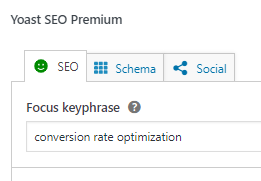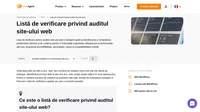- EuropaAsiaOrientul Mijlociu
- Toate listele de verificare
- SEO
- Listă de verificare SEO pentru site-uri noi
Listă de verificare SEO pentru site-uri noi
Listă de verificare SEO pentru site-uri noi: optimizează SEO, îmbunătățește navigarea și viteza de încărcare, asigură conținut de calitate și uptime ridicat. Include cercetarea cuvintelor cheie, alegerea domeniului și platformei, și optimizarea pentru mobil.

- Efectuați cercetarea cuvintelor cheie
- Alegeți numele de domeniu potrivit
- Selectați o platformă web
- Alegeți-vă temele și plugin-urile cu atenție
- Planificați structura site-ului dvs.
- Prioritizați navigarea intuitivă
- Optimizați URL-urile paginilor
- Proiectați un site web adaptabil la mobil
- Treceți site-ul dvs. la SSL
- Ajutați crawlerele motoarelor de căutare să vă indexeze site-ul
- Trimiteți site-ul dvs. la Google Search Console
- Configurați un profil My Business
- Partajați conținut de înaltă calitate
- Vizați cuvintele cheie principale pentru fiecare pagină
- Pregătiți versiuni în diferite limbi ale site-ului dvs.
- Verificați cele mai recente actualizări Google
- Detectarea erorilor tehnice SEO
- Creați etichete de titlu și meta descrieri unice
- Verificați vitezele de încărcare
- Asigurați un timp de funcționare ridicat
- Link către alte pagini
- Urmăriți performanța site-ului dvs. web
- Fiți vizibil pe rețelele de socializare (LiveAgent poate fi util!)
Sunteți pe cale să lansați un nou site web? Dacă da, asigurați-vă că îl treceți mai întâi prin această listă de verificare a optimizării pentru motoarele de căutare. A avea un site web bine optimizat este esențial pentru a obține poziții înalte în motoarele de căutare și pentru a atrage trafic. În această listă de verificare, vom discuta despre cei mai importanți pași pe care trebuie să îi faceți pentru ca site-ul dvs. să fie prietenos cu SEO din prima zi.
Cuprins
Importanța unei liste de verificare SEO pentru site-urile noi
Dacă sunteți la început cu un site web nou, este important să vă asigurați că investiți timp pentru a-l optimiza pentru motoarele de căutare și să luați în considerare factorii de clasificare. Vestea bună este că optimizarea SEO a unui site web nu trebuie să fie dificilă și, în cele mai multe cazuri, poate fi realizată destul de rapid.
Cu puțin efort, vă puteți face site-ul dvs. mai vizibil pentru motoarele de căutare și puteți începe să atrageți mai mult trafic organic.
Cine poate beneficia de o listă de verificare SEO pentru site-urile noi?
Acest ghid SEO este conceput pentru proprietarii de afaceri și de site-uri web care abia încep cu un nou site web. Cu toate acestea, chiar dacă site-ul dvs. este vechi de câțiva ani, este întotdeauna o idee bună să revizuiți acești pași pentru a vă asigura că profitați de cele mai recente tehnici de optimizare a motoarelor de căutare.
Așadar, care sunt pașii cheie pe care trebuie să îi faceți?
Cum se realizează SEO pentru noile site-uri web
Search engine optimization begins with keyword research.
Why is it important to perform keyword research?
Unless you conduct proper keyword research, you will not rank for the right search terms. The result will be that your website won’t get enough traffic, which means it won’t convert as well as it could.
How to perform keyword research?
At first, you’ll want to identify the topic of your website. Once you have a general idea of what your site is about, you can begin identifying target keywords that are relevant to your content.
You can also use search engines themselves to find keywords that people are actually using to look for information online. For example, if you want to target the keyword “pizza,” you should enter it into Google and see what other related keywords show up in the results.
You can also monitor brand mentions and competition keywords to get an idea of what others are targeting. Once you have a target keyword list, you can begin incorporating them into your content and website architecture.
Which tools to use for performing keyword research?
- Google Ads Keyword Planner is a free tool that allows you to identify keywords related to your business, find out how often they are searched for, and see how competitive they are.
- Moz’s Keyword Explorer is a paid tool that allows you to conduct more in-depth keyword research. It provides data on search volume, competition, and other factors that can help you determine whether or not a particular keyword is worth targeting.
- media monitoring tools such as Mediatoolkit to track unlinked mentions and see what people are saying about your brand.
It’s one of the most important steps in optimizing your website for search engines. When picking a domain name, make sure that it accurately describes your business or website.
Why is choosing a domain name important?
Whenever you register a domain name, you also acquire the corresponding IP address with which your website will be associated as long as you own it. This is important because search engines use IP addresses to determine where websites are hosted.
How to choose a domain name?
- choose one that accurately reflects your business or website
- use the right extension (.com, .org, etc.)
- keep it short
- avoid hyphens and numbers
- include keywords to improve your site’s ranking in SERPs
- make sure it is available for purchase and isn’t already taken
- register the corresponding IP address to help improve its ranking
Which tools to use for choosing a domain name?
- domain name search tool such as Namecheap, GoDaddy
- domain name generator e.g. by Shopify
The next step in optimizing your website is to choose the right web platform. When deciding, make sure to select one that is search engine friendly and allows you to easily improve your website’s SEO.
Why is it important to use a search engine-friendly web platform?
This is a tool you’ll be depending on for years to come – you’ll edit existing pages and add new ones, especially if you have a blog. The platform shouldn’t limit you in any way.
What should you consider when choosing a web platform?
- your intended use
- pricing
- learning curve
- customization options
- development help
- easily updatable
- analytics
- integration with other tools
Which web platforms are search engine friendly?
Some of the most popular SEO-friendly web platforms include:
- WordPress
- Wix
- Weebly
- Shopify
When setting up your website, it’s important to choose themes and plugins carefully. When selecting a theme, make sure to choose one that is well-coded and designed for SEO.
Why is it important to use SEO-friendly themes?
SEO-friendly themes are designed with search engines in mind. They typically have built-in features that help improve your site’s ranking in Search Engine Results Pages (SERPs) like optimized code and metadata.
How to pick SEO-friendly themes and plugins?
There isn’t a specific theme that will cause you to rank higher or one that will harm your SEO strategy. Instead, consider factors such as:
- coding quality
- loading speed
- responsiveness
- regularity of updates
- SEO plugin compatibility
- cross-browser tested
Check reviews, opinions, and success stories about a specific theme before making a decision.
Which themes and plugins are SEO-friendly?
- HubSpot WordPress Plugin
- Yoast SEO tool
- WPForms
- Astra
When planning your website, it’s important to structure it in a way that is easy for both readers and search engines to navigate.
Why is it important to plan your site structure?
When you plan your site structure, you are creating a roadmap. By including a clear hierarchy of pages and using keyword-rich titles and descriptions, you can improve your site’s ranking in SERPs.

How to plan your site structure?
Planning your website’s structure and organizing its content is a very time-consuming process, but one that is well worth the effort. Start by creating a list of pages you want on your site, then make a hierarchy starting with the home page and working down to individual ones.
Tip: A page should be no more than three clicks deep into your site.
Which tools to use for planning your site structure?
- Google Analytics Site Structure report
- Yoast SEO plugin
- Shopify theme editor
- website templates
Well-organized and intuitive navigation is crucial for a website’s SEO. Make sure your menu items are easily accessible and all pages can be reached from the main menu. Also, use clear labels for your navigation buttons so that your visitors know where they are heading.
Why is it important to prioritize intuitive navigation?
Navigation menu items that are visible and easily accessible encourage visitors to explore your website. If they can’t find what they are looking for, they will leave frustrated and most likely never return.
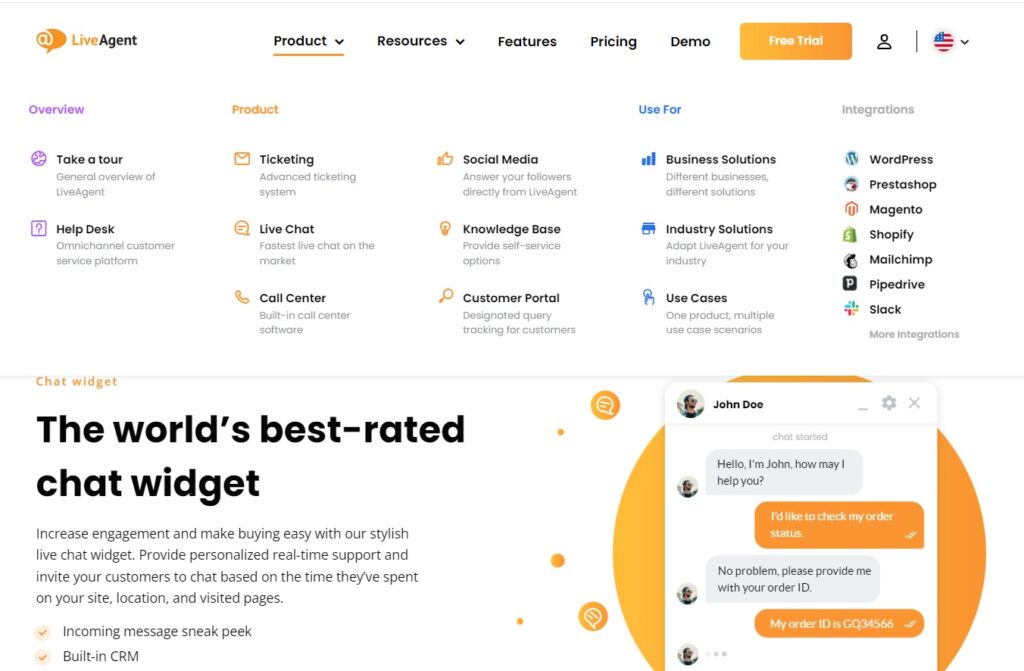
How to design intuitive navigation?
There is no one-size-fits-all answer to this question. However, there are a few things you can do to make your navigation more user-friendly.
- label clearly – visitors will know where to go without having to guess (This increases the chances of them finding what they need on your site.)
- organize your menu items in a logical manner
- make sure all pages can be reached from the main menu
- place your most important pages at the top of the menu
- don’t forget about a search bar
Tip: Think all the time about your visitors’ behavior (what they click, how they interact), and don’t forget to add, e.g., social profiles to drive traffic to your social media pages.
Which tools to use for designing intuitive navigation?
- WordPress themes, such as Divi and Avada, come with pre-made navigation menus that you can customize to fit your needs.
- Hotjar gives insights into how visitors interact with your website, which you can use to improve your navigation.
- Google Analytics provides you with detailed information about your website traffic, letting you see which pages are most popular and allowing you to make changes accordingly.
Having URLs that are short, concise, and keyword-rich will boost your site’s SEO ranking.
Why is it important to optimize page URLs?
Including keywords in your page URLs can help Google and other search engines better understand what your pages are about. This, in turn, can help your website rank higher in SERPs.
How can I optimize page URLs?
You should start by checking if your Content Management System (CMS) allows you to change the URL structure. If it does, make sure to set up 301 redirects from your old URLs to the new ones.
If your CMS doesn’t allow you to change the URL structure, there are still a few things you can do:
- use keywords in file names (e.g., “my-keyword-rich-page.html”)
- use hyphens (-) to separate words in your URLs
- avoid using special characters or symbols, such as & and %
Which tools to use for optimizing page URLs?
- Shopify offers a URL optimization tool that allows you to change the structure of your URLs and include keywords in them.
- WordPress also has a number of plugins that can help you optimize your page URLs.
From the very beginning, you must pay attention to the responsiveness of your site to ensure seamless user experience and facilitate effective website maintenance in the long run. The number of people browsing the web on their phones and tablets is increasing, so you don’t want to lose any potential clients by having a website that doesn’t look good on smaller screens.
Why is mobile-friendly design important?
Google has stated that they will be giving priority to mobile-friendly sites in their SERPs. This means that if your website doesn’t have a versatile design, it could be penalized and ranked lower than those that do.

How to design a website that is mobile-friendly?
First, make sure that all of your content is readable without having to zoom in.
Use large buttons and easy-to-navigate menus and avoid using flash or other plugins that are not supported by most mobile devices. Test your site on various devices to ensure that it works well and looks good.
Which tools to use for designing a mobile-friendly website?
- Google has its own tool, called Google’s Mobile-Friendly Test, which will tell you if your website is optimized for mobile users.
- Responsive Design Checker from WebAIM, which will test how well your website responds to different screen sizes.
- Luigi’s Box Search – used to search queries using artificial intelligence
There’s no excuse nowadays to not use SSL certificate/HTTPS encryption for your website. If you are still using HTTP it’s high time to upgrade.
Why is an SSL certificate important?
Google has been giving increasing priority to websites that use SSL certificates, so you should switch your website over to this protocol as soon as possible. In addition to this, switching to SSL will allow you to use Google Analytics on your website and protect it from malware and hackers.
How to switch a website to SSL?
You will need to purchase an SSL certificate from a trusted provider, then install the certificate on your web server. You will also need to update all of your website’s links to use the new protocol.
Which tools to use for switching to SSL?
- Let’s Encrypt, which is a free, open-source SSL certificate provider.
- Cloudflare plugin for WordPress, which will help you to secure your website with a single click.
Search engine bots find publicly available web pages by indexing them. They keep copies of all the information they find on their servers. Then when a user performs a search, the engine displays relevant results to them.
Why is it important for crawlers to index your website?
Simply put, if your website isn’t crawled and indexed, it won’t show up in search engine results pages.
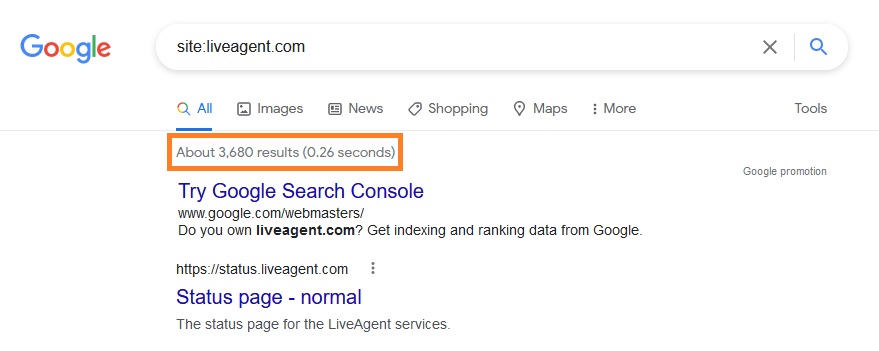
What can be done to help crawlers index your website?
- Check that all pages of the website are crawlable, which includes making sure that the robots.txt file and meta tags do not block crawlers.
- Search engine crawlers will understand the content of your pages if you use proper titles, descriptions, and keywords on them.
- Monitor crawler errors and correct any that are found as soon as they are noticed, since they may affect the indexability of pages.
- Update the website with fresh content as often as possible to help improve indexing, since crawlers visit websites more often when new content is added.
Which tools to use for helping crawlers index your website?
- permalink structure
- Google Search Console
While we are talking about indexing, you must submit your site to Google Search Console to allow search engine crawlers to do this.
Why is Google Search Console important?
It allows you to see how your website performs in Google search results and helps you to diagnose and fix errors that may be preventing your website from ranking high. Additionally, you gain valuable insights into the keywords people use to find your website.
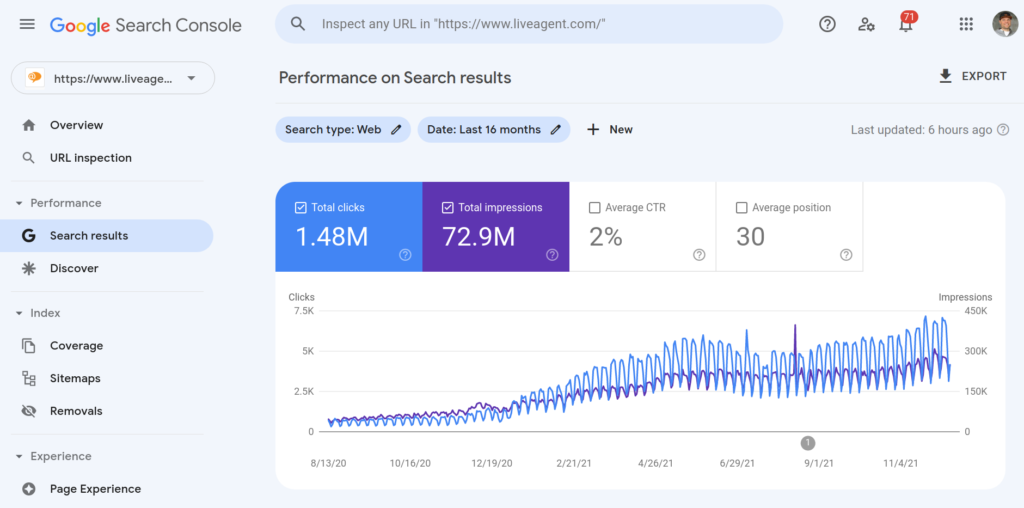
How to submit my website to Google Search Console?
The process of setting up your website in Google Search Console is fairly simple:
- create a free account on the Google Search Console website
- add your website’s URL
- verify that you own the website
- add your website’s sitemap
- wait for Google to index your website
- start tracking your website’s performance
Which tools to use for submitting a website to Google Search Console?
- Yoast SEO, a free plugin for WordPress websites
- Google Search Console plugin for WordPress
Nowadays, Google My Business is no longer an optional feature but an essential part of any online presence.
Why is setting up a My Business Profile important?
Your website is one of your most important marketing tools. By listing it on your Google My Business profile, you make it easy for customers to find and visit. In addition, having a verified website on your profile can, of course, help improve your ranking in SERPs as well.
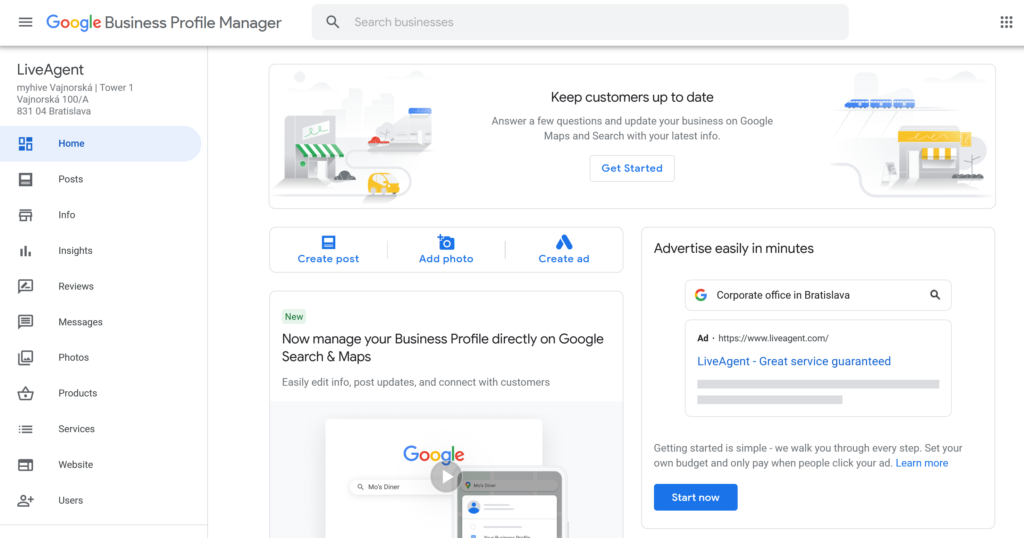
How to set up a My Business Profile?
To list your website on your Google My Business profile, you’ll need to provide the following information:
- website address
- categories (such as grocery store, hotel, restaurant, etc.)
- description of your business
- Make sure to complete every field and include a link to your website. You can also add images and video content to help promote it.
Which tools to use for setting up a Google My Business profile?
- Google’s own guide to creating a Google My Business profile, which includes step-by-step instructions on how to create your profile as well as tips and tricks for making the most of it.
- Hootsuite’s guide to setting up a Google My Business profile, including instructions for both creating and editing your profile.
A content strategy is one of the most important aspects of SEO. You need to add relevant content to your website on a regular basis.
Why is the quality of content so important?
In addition to building a professional image around your brand, high-quality pieces of content can also improve your SEO. They will keep visitors engaged and interested in your business.

How can you create high-quality content?
Content ideas vary according to your business and audience, so there is no standard answer to this question. The following are some general tips to remember when creating your content:
- ensure it is relevant to your business
- include keyword-rich titles and descriptions
- make sure the content is well written and easy-to-read
- include images and videos whenever possible
- do not upload duplicate content to your website
- use tables of content
It is possible to engage your customers even more and catch their attention. You could add customer reviews, for example, to further convince visitors to convert.
Which tools to use for creating high-quality content?
- Kontentino Content Calendar helps you plan and schedule your content, as well as track its performance.
- Google Docs/Sheets help you easily create and edit documents and spreadsheets, which can be useful for creating content.
- Canva is a free online design platform that makes it easy to create visuals for your website or blog posts.
- a content checklist not to miss any important points.
Make sure to target a primary keyword for each page on your website. This will help improve your SEO and make it easier for customers to find the information they’re looking for on your site.
Why are keywords important?
When you target a primary keyword for each page, it tells Google that the page is specifically about that topic. This way, you can increase your chances of ranking higher in search results.
How to find the right keywords?
- think about what terms people would use to search for your products or services
- consider long-tail keywords, which are specific and targeted phrases that are more likely to result in conversions
- incorporate keywords into your website’s content, titles, meta descriptions, and header tags
Which tools to use for targeting primary keywords?
- Google Ads Keyword Planner
- SEMrush is a tool that provides detailed information on your website’s competitors, including their keywords and ad strategies
- Moz Keyword Explorer lets you find keywords based on your site’s content and measures their keyword difficulty
If you offer your products or services in multiple languages, it’s important to prepare your website for those language versions.
Why is multilingual SEO important?
Because it allows you to target foreign audiences who are searching for information about your products or services in their native tongue. Optimizing your website for different languages can help improve your ranking in foreign search engines too.
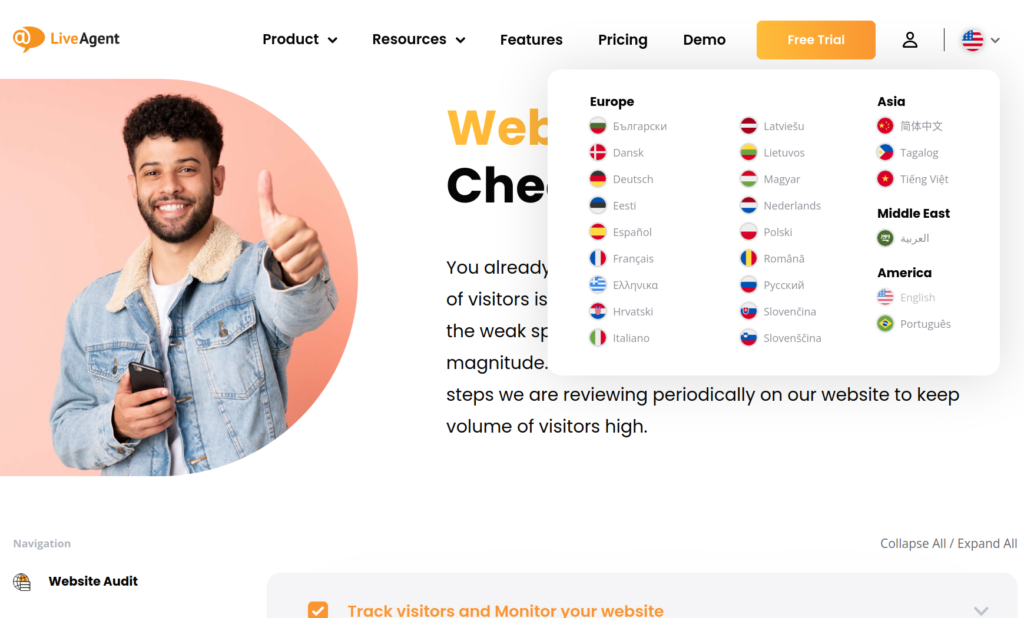
How to prepare different language versions of a website?
- use a translation plugin or tool
- make sure all of your website’s content is well translated, including titles, descriptions, and images
- create separate pages for each language version of your website
Which tools to use for translating a website?
- Google Translate, which is free and allows you to translate text, websites, and documents.
- Bing Translator also offers free translations of text, websites, and documents
- WordPress Translation Plugin helps you easily translate your WordPress website into different languages.
When it comes to optimizing your website for SEO, it’s important to keep up with the latest Google updates. The good news is that most of the popular web platforms include features that help you stay up-to-date with the latest trends.
Why is checking the latest Google updates important?
You may experience a decrease in traffic if your website isn’t optimized for the current version of Google’s algorithm. By checking the latest Google algorithm updates, you can ensure that your website is configured in a way that improves your SEO and minimizes your risk of being penalized by Google.
How to stay up-to-date with the latest Google updates?
You need to observe the latest Google updates by reading blogs like MOZ, Search Engine Land, and others. Additionally, you should monitor what is working and what isn’t with your website by using Google Analytics or any other analytical tool.
Which tools to use for checking the latest Google updates?
- Google Search Console
- Google Analytics
- Google Webmaster Tools
- MozCast
Regularly check for any errors and fix them as soon as possible.
Why is detection of technical SEO errors important?
Technical SEO errors can prevent your website from ranking high in SERPs. In some cases, such errors can even get your website banned by Google, so it’s important to detect and fix them as soon as possible.
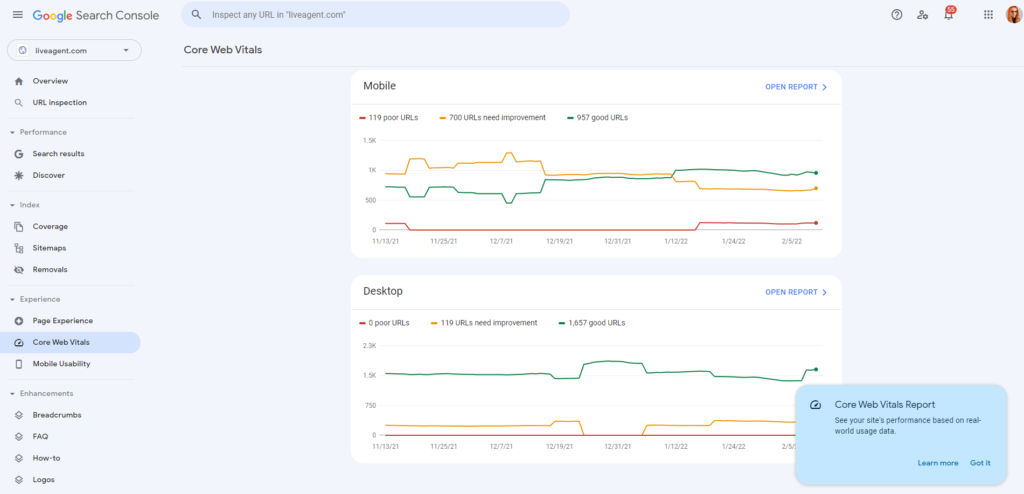
How to detect technical SEO errors?
- identify internal linking and external link building
- recognize thin content
- scan for keyword optimization
- make sure meta tags are optimized
- check for duplicate content
- resolve broken links
Which tools to use for detecting and fixing technical SEO errors?
- Google Search Console helps you to find and fix errors on your site.
- Google Analytics provides you with information about your website’s traffic, including which pages contain the most errors.
- Screaming Frog SEO Spider crawls your website and finds any errors that may be affecting your ranking.
Well-optimized meta descriptions and title tags are highly valued aspects of the SEO process. To make the most of this, ensure that your website’s title tags and meta descriptions are distinctive.
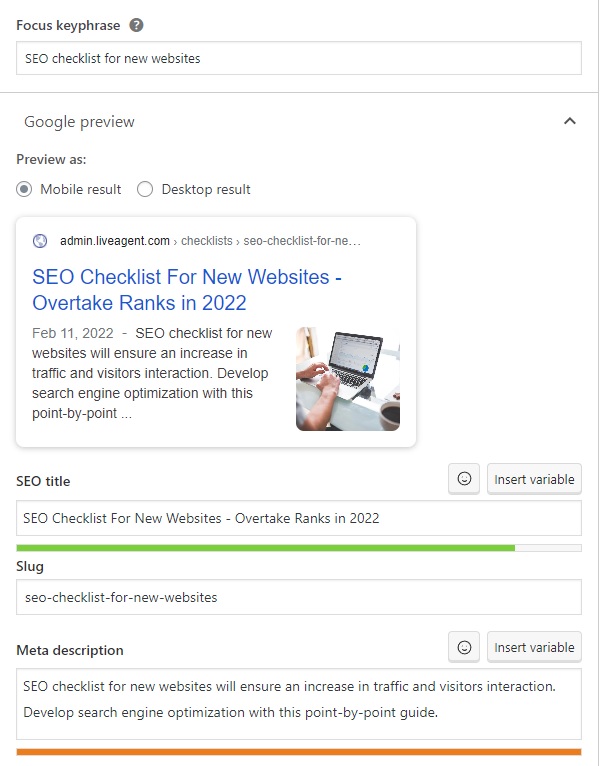
Why are original title tags and meta descriptions important?
Custom title tags and meta descriptions help you rank higher in search engines. They also help improve click-through rates, which can result in increased quality traffic and conversions.
How to create unique title tags and meta descriptions?
- use different keywords for each page
- write a unique description for each page
- use catchy headlines to entice people to click on your link
Which tools to use for creating unique title tags and meta descriptions?
- Meta Description Generator by Frase
- AI-powered title tag generator, e.g. Jarvis
One of the factors that Google takes into account when ranking websites is their loading speed and server response time (how long it takes after a web client makes a request).
Why is checking loading speeds important?
A slow server response time can negatively affect the user experience and cause visitors to leave your website, as well as hurting your website’s SEO ranking.
How to improve your website’s loading speed?
Once you have identified that there is an issue with your website’s loading speed, there are a few actions you can do to improve it.
- optimize images (it’s one of the simplest fixes)
- minify your JavaScript and CSS files
- use a caching plugin to improve your website’s loading speed
Which tools to use for checking your website’s loading speed?
- Google’s PageSpeed Insights tool, which will give you a score and suggestions on how to improve your loading speed
- Pingdom Speed Test Tool
The uptime of your website refers to its availability and accessibility.
Why is high uptime important?
Downtime is something that occurs occasionally during system maintenance. No visitor who visits your domain can access your website when it is down.
This can result in penalties from search engines, making you invisible to users. It poses a real problem, but you can prevent it to some extent.
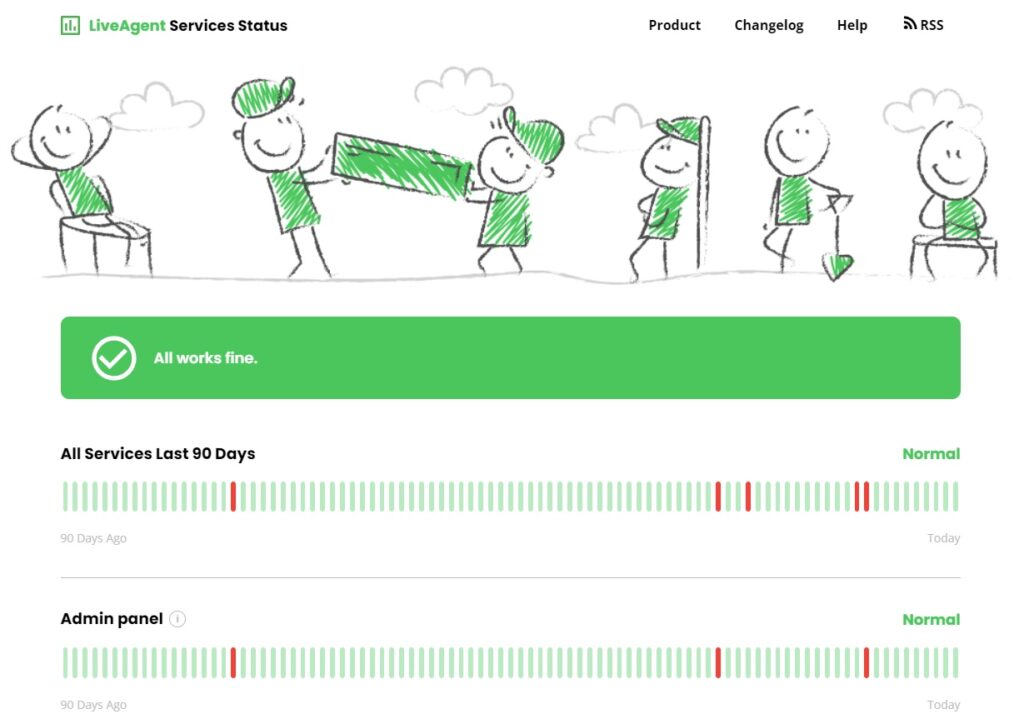
What can be done to ensure a high uptime?
There are a few things you can do to ensure high uptime of your site:
- use a reliable web hosting company
- choose a server that is not overloaded
- use caching plugins
- minify your JavaScript and CSS files
- ensure website security
Which tools to use for ensuring a high uptime?
- UptimeRobot sends you an email notification if your website goes down
By linking one page of your site to another, you create inbound links. Outbound links are those that direct to other websites.
Why is link building important?
WordPress internal linking is important because it helps increase your website’s authority and visibility. Quality backlinks tell search engines that your website is a credible source of information.
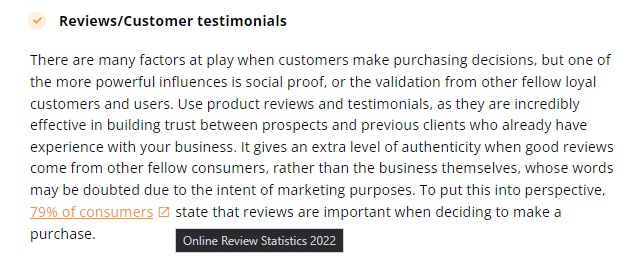
How to link to other pages?
There are a few ways to link to other pages on your website. You can use an anchor, which is a link (hidden in the text) that leads to another page. Another way to do this is by using the URL of the page you want to link to. You can also create a hyperlink, which is a special type of link that will open in a new window.
Which tools to use for linking to other pages?
- Yoast SEO
- All in One SEO Pack plugin
Maintaining your website’s health is essential for good search engine optimization.
Why is tracking the performance of a website important?
- to ensure that your website is being crawled and indexed by search engines
- to track any changes in your website’s rank for certain keywords or phrases
- how much and from where your site is getting traffic
What is the best way to track the performance of a website?
There are a number of different ways to track the health of your website in terms of its performance, but one of the most efficient is through Google Analytics. This free service provides you with a wealth of information about your website performance, including:
- how many visitors do you have
- where your visitors are coming from
- what pages they are visiting
- how long they are staying on your site
- what search terms are leading people to your site
Google Analytics is a powerful tool, and it’s essential to make use of it if you want to improve your website’s SEO. Be sure to set up an account and add a tracking code to your website so that you can start monitoring your site’s performance.

Which tools to use for tracking website performance?
- Google Analytics
- Bing Webmaster Tools
- SEO audit
Social media are important when it comes to SEO and can have a huge impact, especially on new websites.
Why are social media important for SEO?
Interacting with users and publishing regular content on social media will help you build brand trust online (which helps with SEO). Social media can also boost SEO by gaining natural links.
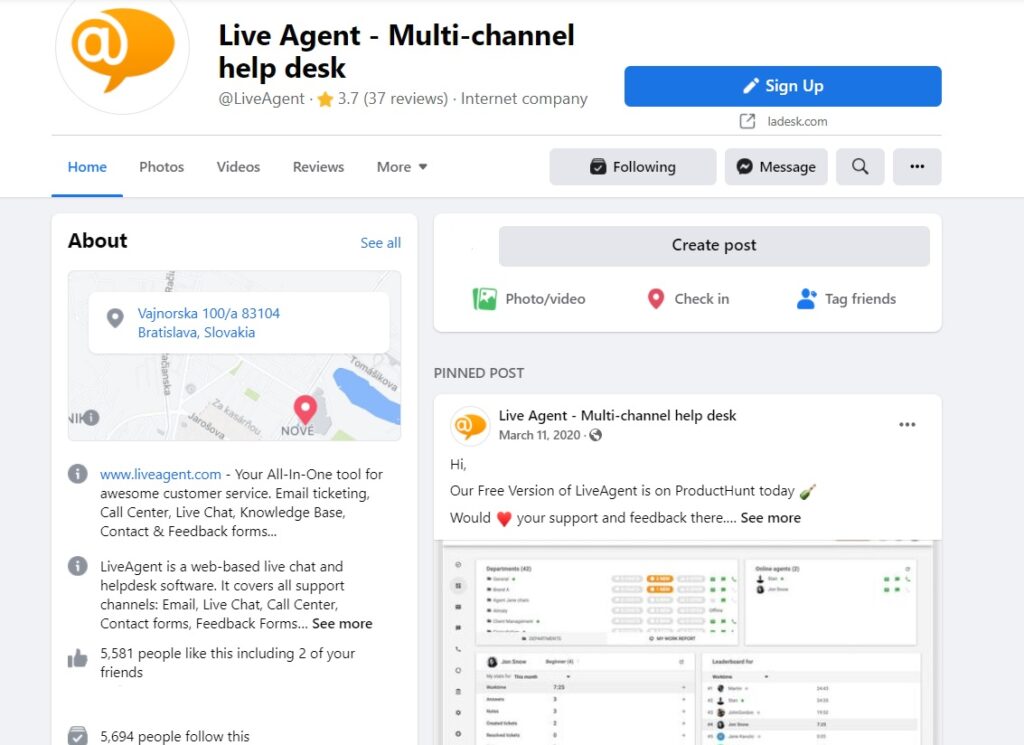
How to handle social media visibility to improve SEO?
Share an interesting piece of content on your social media. It may be passed on to other users and, as a result, appear in external sources, such as forums.
Link building is a crucial aspect of effective positioning, so getting links this way improves SEO. Make use of that and try to give as many opportunities as possible to interact with your followers (post engaging content, use videos, have fun with this creative process).
Regularly respond to their questions, comments, and opinions – LiveAgent can be useful here. Check out this social media support software that collects all the interactions into one inbox so you can manage them all from one place. As a result, staying in touch with your customers will be easier.
What are the best tools for being visible on social media?
- social media management software e.g. Kontentino
- LiveAgent Social Media Support Software
Rezumat al listei de verificare SEO pentru site-urile noi
- Efectuați cercetarea cuvintelor cheie
- Alegeți numele de domeniu potrivit
- Selectați o platformă web
- Selectați o platformă web
- Planificați structura site-ului dvs.
- Prioritizați navigarea intuitivă
- Optimizați URL-urile paginilor
- Proiectați un site web adaptat la mobil
- Treceți site-ul dvs. la SSL
- Ajutați crawlerele motoarelor de căutare să vă indexeze site-ul
- Trimiteți site-ul dvs. la Google Search Console
- Configurați un profil My Business
- Partajați conținut de înaltă calitate
- Vizați cuvintele cheie principale pentru fiecare pagină
- Pregătiți versiuni în diferite limbi ale site-ului dvs. web
- Verificați cele mai recente actualizări Google
- Detectați erorile tehnice SEO
- Creați etichete de titlu și meta descrieri unice
- Verificați vitezele de încărcare
- Asigurați un timp de funcționare ridicat
- Link către alte pagini
- Urmăriți performanța site-ului dvs. web
- Fiți vizibil pe rețelele de socializare
Frequently Asked Questions
How to use the SEO checklist for new websites?
It can be used as a guide to help you optimize your website for search engines. It includes key steps that you need to take into account, such as optimizing your domain name, web platform, checking for Google updates, and setting up SSL certificates. Use our checklist, adjust it to your needs, and enjoy an SEO-friendly site.
How can I perform SEO for a new website?
In most cases, it's fairly easy and can be done in a short amount of time. Here is a list of the most important things to do: make sure your website is registered with Google Search Console and submit your XML sitemap; add keywords to your title tags, meta descriptions, and header tags; optimize your images for search engines; include links to other websites and blog posts; use keyword-rich anchor text for your links and create a blog and add new content regularly.
How do I find SEO keywords for my website?
There are a number of different tools that you can use to find relevant keywords for your website. The Google Adwords Keyword Planner is a good place to start. You can also use Google Search Console to identify keywords that people are using to find your website. These tools are very popular so you will have no problems finding tutorials on how to use them.
How do I assess SEO for my website?
You can use a number of different tools to assess your website's SEO, but the most popular one is Google PageSpeed Insights. This tool will give you a score for both mobile and desktop devices, as well as tips on how to improve your rating.
Listă de verificare pentru atracție de nerefuzat pentru clienții potențiali
Atrageți clienți potențiali cu lista noastră de verificare! Ghid complet pentru un magnet de lead-uri irezistibil. Aflați mai multe!
Listă de verificare pentru lansarea unui nou site web
Lansați site-ul perfect cu lista de verificare completă: setare obiective, UX, branding, CMS, promovare, integrare instrumente. Detalii aici!
Listă de verificare privind auditul site-ului web
Optimizează-ți site-ul cu lista LiveAgent! Identifică și rezolvă problemele tehnice și de conținut pentru o performanță web superioară.
Listă de verificare privind pagina de destinație
Creșteți conversiile cu lista de verificare LiveAgent! Ghid pas cu pas pentru pagini de destinație eficiente, ideal pentru marketeri și afaceri.
You will be
in Good Hands!
Join our community of happy clients and provide excellent customer support with LiveAgent.

Pagina noastră de internet utilizează module cookie. Continuând utilizarea acesteia, ne oferi permisiunea să instalăm module cookie așa cum este detaliat în politica privind confidențialitatea și modulele cookie.

- How to achieve your business goals with LiveAgent
- Tour of the LiveAgent so you can get an idea of how it works
- Answers to any questions you may have about LiveAgent

 Български
Български  Čeština
Čeština  Dansk
Dansk  Deutsch
Deutsch  Eesti
Eesti  Español
Español  Français
Français  Ελληνικα
Ελληνικα  Hrvatski
Hrvatski  Italiano
Italiano  Latviešu
Latviešu  Lietuviškai
Lietuviškai  Magyar
Magyar  Nederlands
Nederlands  Norsk bokmål
Norsk bokmål  Polski
Polski  Русский
Русский  Slovenčina
Slovenčina  Slovenščina
Slovenščina  简体中文
简体中文  Tagalog
Tagalog  Tiếng Việt
Tiếng Việt  العربية
العربية  English
English  Português
Português 